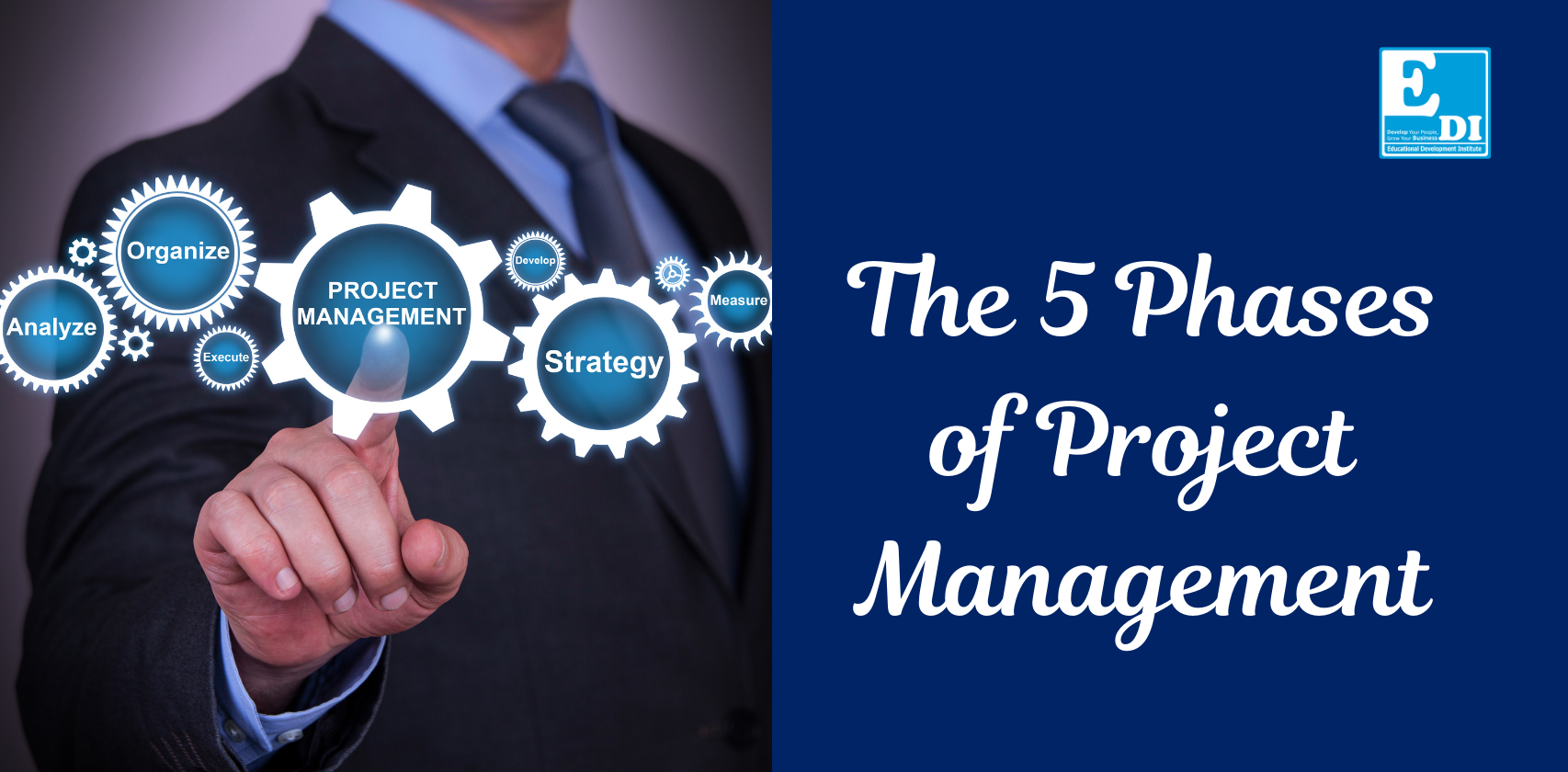WHAT IS TEAM BUILDING?
Team building is a process of bringing a group of people together to improve their collaboration and working relationships. It's designed to help them function more effectively as a team to achieve common goals.
There are two main aspects to team building:
• Building relationships: This involves activities that help team members get to know each other better, trust each other more, and communicate more effectively.
• Defining roles: This involves activities that help team members understand their individual roles and responsibilities within the team, as well as how their roles complement each other.
Team building can be done in a variety of ways, including:
• Formal activities: These are planned events that are designed specifically for team building, such as ropes courses, scavenger hunts, or problem-solving exercises.
• Informal activities: These are everyday interactions that can be used to build teamwork, such as brainstorming sessions, team meetings, or working lunches.
Team building is an important part of any successful organization. When teams work well together, they are more productive, efficient, and satisfied with their jobs.
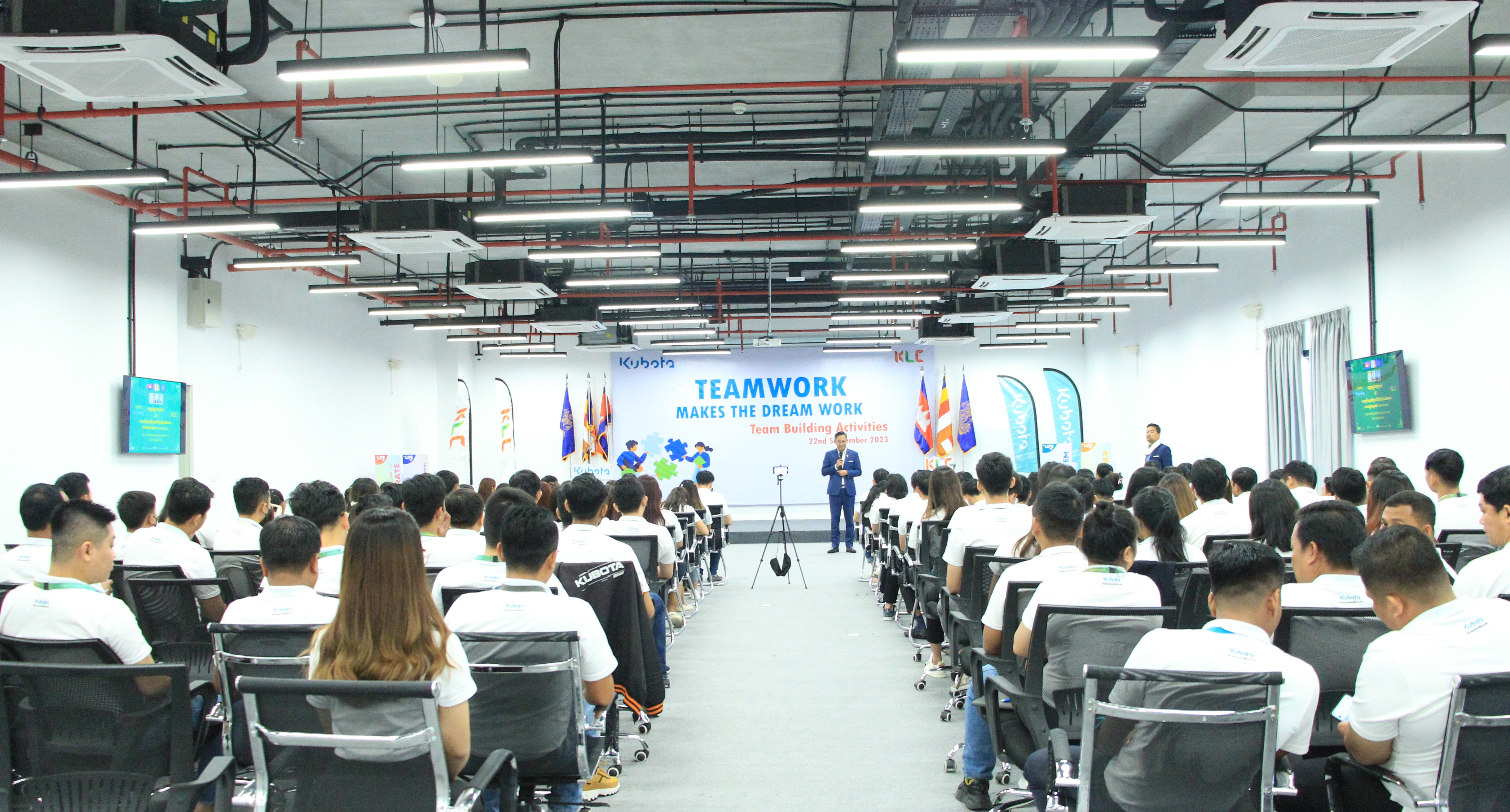
5 REASONS WHY TEAM BUILDING IS IMPORTANT FOR YOUR ORGANIZATION?
1. IMPROVED COMMUNICATION
Team building activities can help team members learn about each other's communication styles and preferences. This can lead to more effective communication in the workplace, as people will be better able to understand how to get their message across and how to interpret others' messages. Team building can be a fantastic way to improve communication among team members.
Breaking Down Barriers:
• Informal Setting: Team building activities take place outside the usual work environment, creating a more relaxed and informal atmosphere. This can help break down communication barriers and encourage people to interact more freely.
• Understanding Personalities: Working together on shared challenges allows team members to see each other in a new light. They can observe communication styles, strengths, and weaknesses, fostering better understanding and communication.
Sharpening Communication Skills:
• Active Listening: Many team building activities require active listening to understand instructions, collaborate effectively, and build trust. This practice translates to improved listening skills in the workplace.
• Clear Communication: Team building exercises often involve clear communication of ideas, plans, and needs to achieve a common goal. This hones communication skills and promotes a more direct and efficient way of interacting.
• Different Styles: Team building can involve people with diverse communication styles. Working together encourages them to adapt their communication approach for better understanding and collaboration.
Building a Foundation for Teamwork:
• Shared Language: Team building activities can help establish a shared language and understanding of team goals, objectives, and even humor. This common ground facilitates clearer communication in the workplace.
• Increased Trust: As trust builds through team building, team members feel more comfortable expressing themselves openly and honestly, leading to better communication.
• Conflict Resolution: Team building exercises can provide practice in resolving conflicts constructively. This translates to improved communication skills in handling disagreements within the team at work.
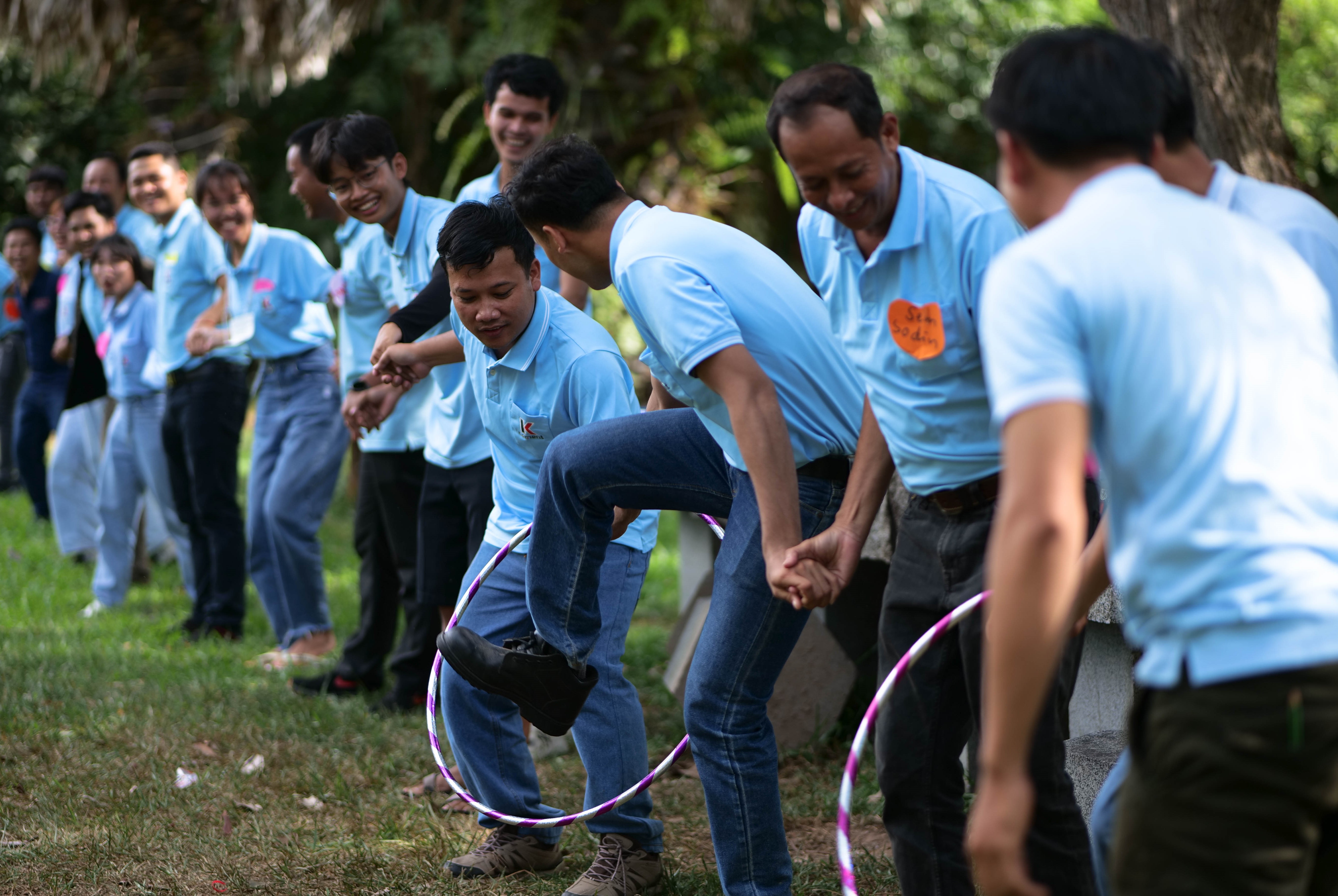
2. INCREASED TRUST
When team members participate in activities together, they get to know each other better on a personal level. This can help to build trust and rapport, which is essential for any team that wants to be successful. Team building is a powerful tool for building trust among team members. Here's how it works:
• Shared Experiences: Team building activities take team members out of their usual work routines and put them in situations where they can collaborate and rely on each other to achieve a common goal. This can help them see each other in a new light and appreciate each other's strengths and weaknesses.
• Open Communication: Effective team building exercises often require open communication and collaboration. This can help team members feel more comfortable expressing themselves and build trust by fostering better understanding.
• Increased Vulnerability: Some team building activities can involve a degree of vulnerability, such as facing challenges together or revealing personal information in a safe space. This vulnerability can lead to a stronger sense of connection and trust among team members.
• Focus on Strengths: Team building activities often highlight individual and collective strengths. This appreciation for each other's skills and contributions can build trust and foster a more supportive work environment.
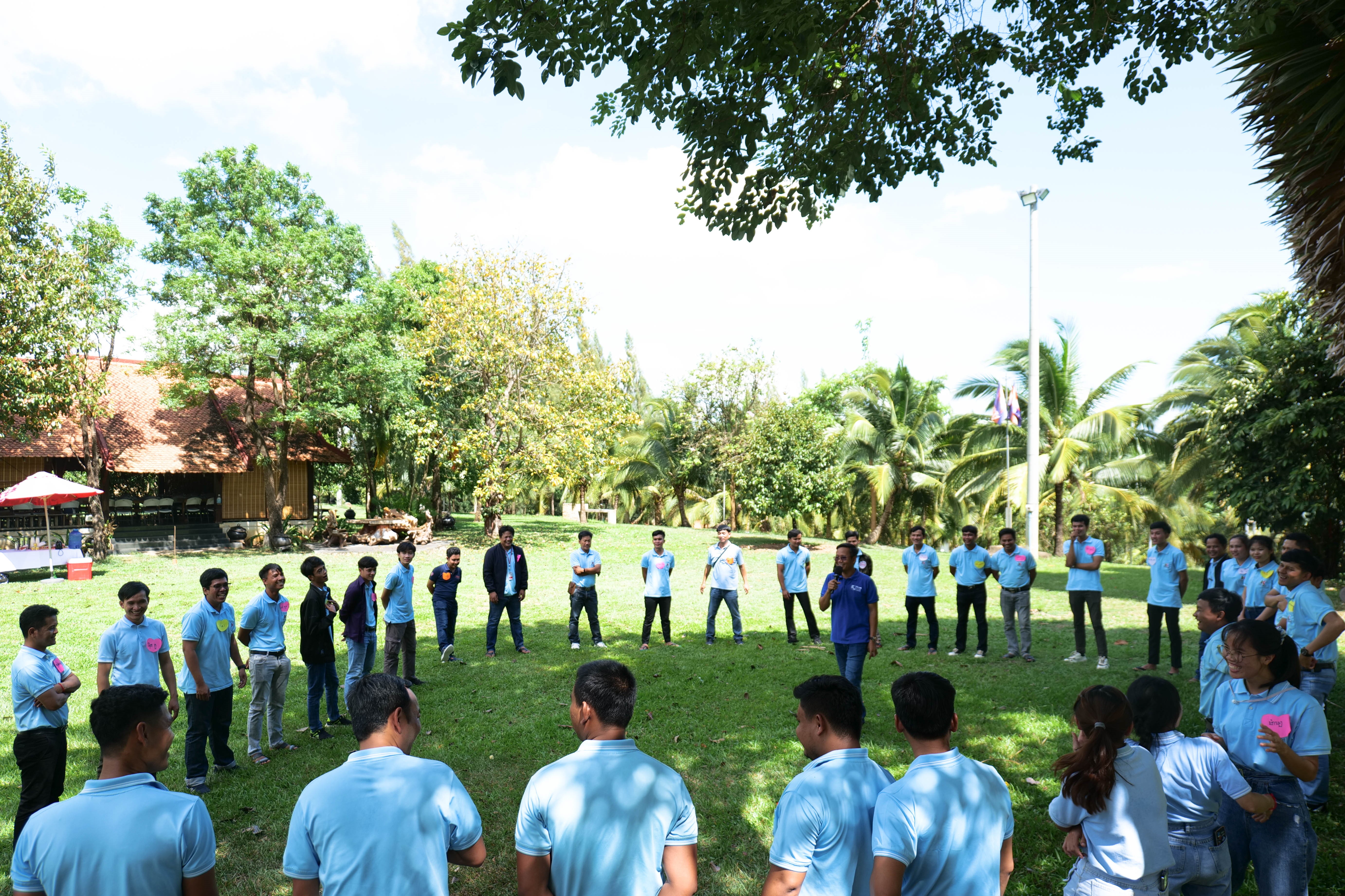
3. ENHANCED COLLABORATION
Team building exercises can help team members develop the skills they need to collaborate effectively. This includes things like problem-solving, decision-making, and conflict resolution.
Building the Foundation for Collaboration:
• Trust and Open Communication: Team building exercises can create a more relaxed environment where people feel comfortable interacting and sharing ideas. This fosters trust and rapport, which are essential for open communication, a cornerstone of collaboration.
• Shared Goals and Vision: Well-designed activities can highlight the team's common goals and vision. This shared purpose motivates team members to work together effectively towards achieving those goals.
• Understanding Strengths and Weaknesses: Activities that involve teamwork help team members discover and appreciate each other's strengths and weaknesses. This allows them to leverage each other's skills and expertise,leading to a more well-rounded and effective team.
Developing Specific Collaborative Skills:
• Communication: Team building exercises often involve active listening, clear communication of ideas, and adapting communication styles to different personalities. This practice translates into stronger communication skills within the team, crucial for collaboration.
• Problem-Solving: Working together on challenges hones problem-solving skills. Team members learn to think creatively, share ideas effectively, and build consensus. These skills are essential for collaborative problem-solving in the workplace.
• Conflict Resolution: Team building activities can provide a safe space to practice healthy conflict resolution. This equips team members to navigate disagreements constructively in the future, fostering smoother collaboration.
Strategies to Enhance Collaboration:
• Shared Experiences: Team building creates shared experiences that strengthen team bonds. This can lead to a more collaborative work environment where team members are more willing to help each other and work towards shared goals.
• Breaking Down Silos: Activities that involve members from different departments or teams working together can break down silos and build relationships. This fosters a more collaborative culture across the organization.
• Celebrating Success: Sharing and celebrating successes achieved through team building activities reinforces the value of collaboration and motivates teams to continue working together effectively.
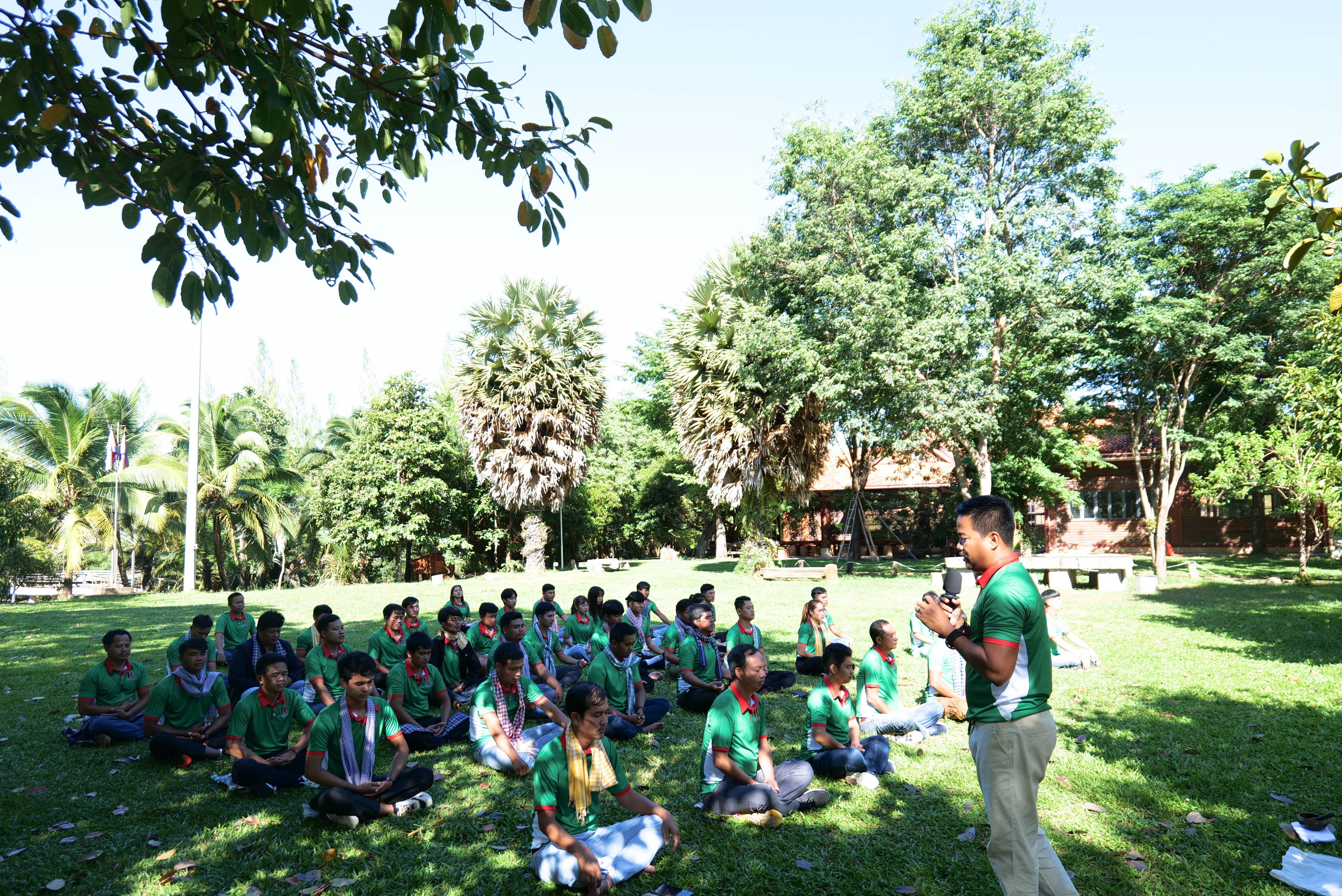
4. BOOSTED MORALE
Team building activities can be a lot of fun, and they can help to boost team morale. When team members have a positive attitude about working together, they are more likely to be productive and successful.
Building a Positive Atmosphere:
• Fun and Engaging Activities: Well-designed team building activities can be fun and engaging, taking team members out of their everyday routines and fostering a more positive and relaxed work environment. This can lead to increased enjoyment and satisfaction with their work.
• A Sense of Accomplishment: Team building activities often involve working together to achieve a common goal.Completing a challenge or task together creates a sense of accomplishment and shared success, boosting team morale and motivation.
• Building Camaraderie: Team building activities can create opportunities for team members to bond and socialize outside of their usual work roles. This can help build camaraderie and a sense of belonging, leading to a more positive and supportive work environment.
Strengthening the Team:
• Improved Communication: As discussed earlier, team building activities can enhance communication skills,leading to clearer understanding and less frustration. This fosters a more positive and productive work environment,boosting team morale.
• Increased Trust: Team building activities can build trust and rapport among team members. This sense of trust creates a safe space for collaboration and open communication, leading to a more positive and supportive work environment.
• Appreciation for Strengths: Team building activities can highlight individual strengths and contributions. This appreciation for each other's skills and talents boosts morale and fosters a sense of value within the team.
Long-Term Benefits:
• Reduced Stress: Fun and engaging activities can be a great way to relieve stress and promote mental well-being.This can lead to a happier and more productive team with higher morale.
• Increased Retention: When team members feel valued, appreciated, and part of a strong team, they are more likely to be satisfied and stay with the company. This can lead to improved morale and a more stable team environment.
5. IDENTIFICATION OF TALENTS
Team building exercises can also help to identify hidden talents and strengths among team members. This can be helpful for managers who are looking to develop their employees and create a more well-rounded team.
Overall, team building is an investment that can pay off in a big way for businesses and organizations. By taking the time to build a strong team, you can create a more productive, efficient, and enjoyable work environment.
SOME EXAMPLES OF TEAM BUILDING ACTIVITIES FOR YOUR ORGANIZATION
1. Communication and Collaboration:
• Escape Rooms: Working together under pressure to solve puzzles and escape the room requires effective communication, problem-solving, and utilizing diverse strengths.
• Scavenger Hunts: Collaborative planning, communication, and following instructions are key to completing a scavenger hunt successfully.
• Improv Games: Improv activities encourage active listening, thinking on your feet, and working together to create something new, all of which are essential for strong communication and collaboration.
2. Problem-Solving and Creativity:
• Design Challenges: These challenges can take many forms, from building the tallest tower out of marshmallows and spaghetti to creating a new product using limited resources. They encourage creative thinking, problem-solving, and collaboration.
• Case Studies: Working together to analyze and solve a real-world business case study hones critical thinking, problem-solving, and communication skills.
• Reverse Engineering Challenges: Taking apart a common object and then figuring out how to put it back together or even improve upon it encourages creative problem-solving and teamwork.
3. Trust and Rapport Building:
• Blindfolded Trust Walk: One team member is blindfolded and guided through an obstacle course by their teammates, fostering trust and communication.
• Two Truths and a Lie: Team members share three statements about themselves,with two being true and one being a lie. Others guess the lie, which is a fun way to reveal personal details and build rapport.
• Volunteer Projects: Working towards a common goal outside of the work environment can build camaraderie and a sense of shared purpose, strengthening trust and relationships.
4. Celebrating Success and Fun:
• Game Nights: Organize a board game or video game night for some friendly competition and team bonding in a casual setting.
• Company Outings: Plan a fun outing like a bowling night, a picnic in the park, or attending a sporting event together. This is a great way to relax and have fun outside of the office.
• Potlucks: Encourage team members to bring a dish to share and enjoy a delicious meal together. This can be a fun way to learn about each other's cultures and backgrounds.
*Some additional tips:
• Choose activities that are relevant to your team's interests and work.
• Focus on activities that promote collaboration and teamwork.
• Celebrate successes, both big and small.
• Get feedback from your team on the activities and make adjustments as needed.
If you are looking for a Perfect Team Building Day for your organization, we are here to help your team to connect, communicate, and achieve more together. At EDI, we provide a wide range of team building activities; both OUTDOOR and INDOOR specially customized as per client’s needs.
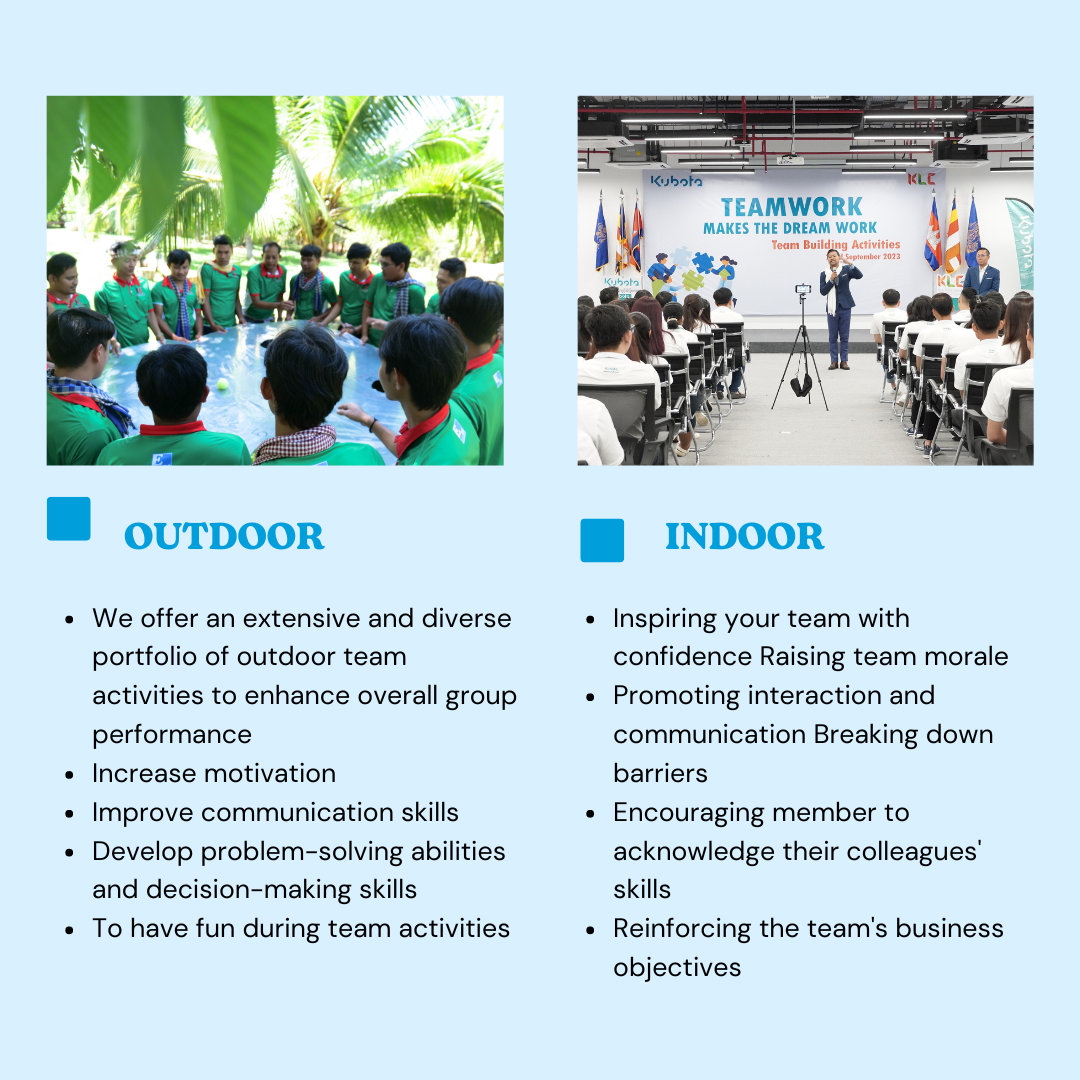
For more information please write to us director@edi-cambodia.org or call us at +855 - 11 888 644.
Develop Your People, Grow Your Business


.png)
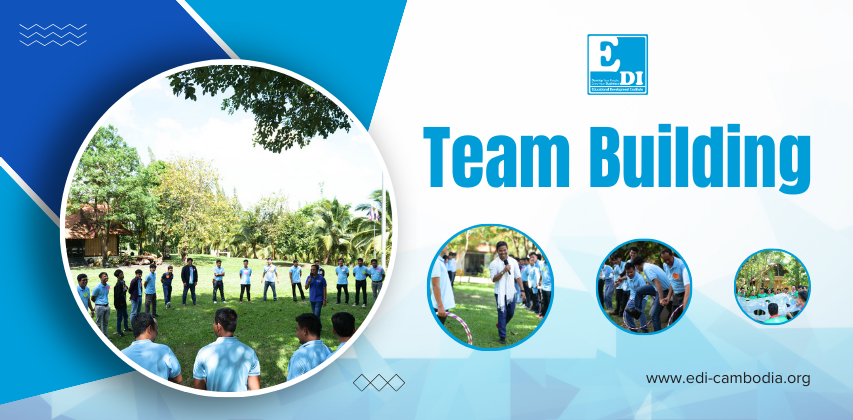
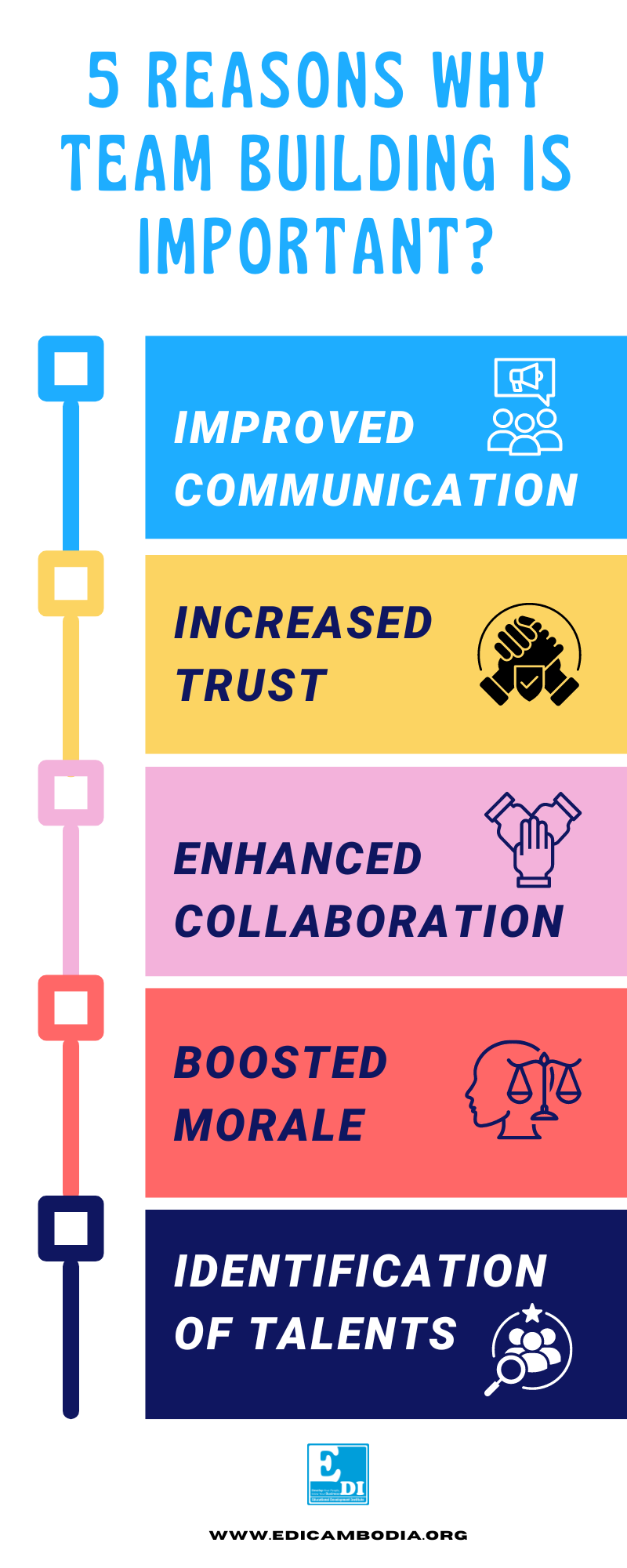


 Primary School Knowledge & Methodology.jpg)





